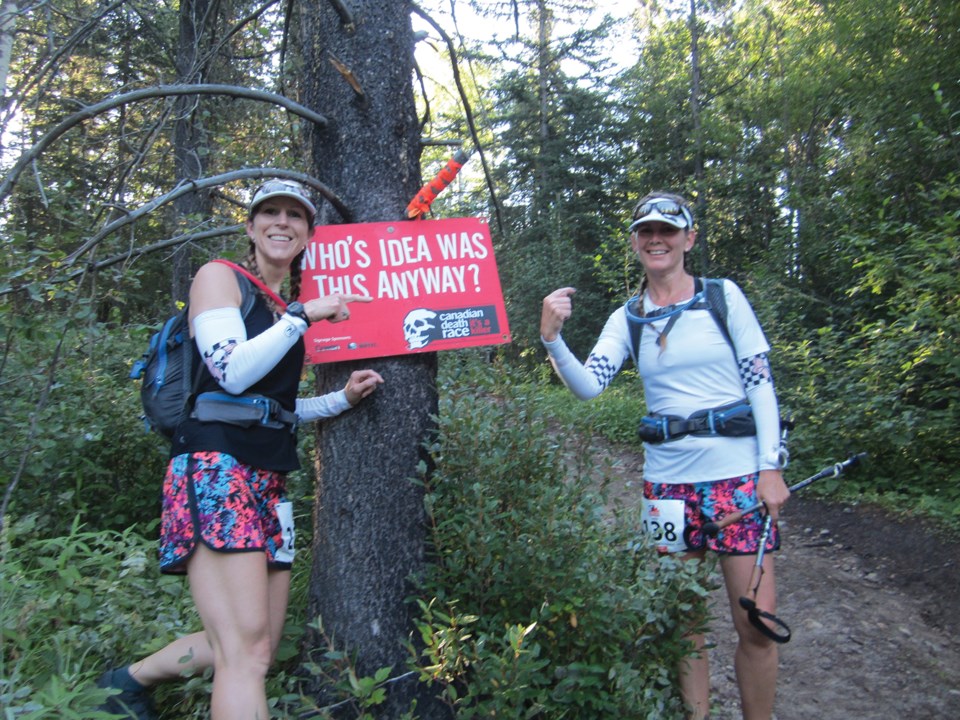While the concept of a “death race” would probably have a lot of people running away — rather than to — such an event, a former ������Ƶappresident decided to tackle it head-on.
And she did so while battling a degenerative disease, which in some cases, can lead to fatal complications.
But that didn’t stop Deborah Campbell.
“‘No’ is not an option,” Campbell said. “If a ‘no’ ever presents itself, it means I haven’t asked the right question.”
“That’s the mindset after all these years that you develop — it’s just that drive,” she added.
It’s tough talk coming from a woman who has to deal with a tough situation. The Canadian Death Race took place this year in Grand Cache, Alberta.
The course can be brutal.
Spanning 125 kilometres, the race circuit winds through three mountain summits and includes 17,000 feet of elevation change.
But perhaps a more daunting challenge lies in confronting ankylosing spondylitis, a condition which often leaves Campbell in chronic pain.
It’s estimated between 150,000 to 300,000 Canadians have this condition, which causes the immune system to attack joints in the spine, creating a great deal of stiffness and pain. Sometimes, the spine fuses together.
While this condition is a form of arthritis, it shouldn’t be mistaken as an ‘old’ person’s disease.
The majority of people who have this issue begin to experience symptoms starting from the ages of 15 and 30. Diagnosing the condition can take 10 years.
Campbell, who’s 50 years old, started battling this disease in her thirties.
She’s a seasoned ultra marathoner, which means she’s used to participating in races that are longer than a conventional 42-kilometre marathon.
However, Campbell’s condition has forced her to make adjustments. For example, she’s had to shorten her stride and alter her footplant to accommodate a different range of motion.
She also has to push through the side effects of medication that can make her feel tired and unwell.
In the end, Campbell didn’t make it to the finish line of the Canadian Death Race.
On the second leg of the race, she had to be brought off by the rangers because of a foot injury.
The injury resulted from overuse, she said.
At first she was heartbroken, and tears were shed.
But at the end of the day, she had accomplished her mission — to raise awareness about her condition.
“‘You did spread the awareness — you didn’t need to finish the race for that,’” she said, recalling what the park rangers told her when helping her off her feet. “They had no idea about ankylosing spondylitis, and now they do.”




